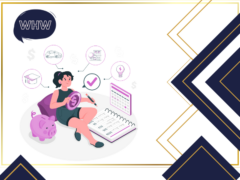What is Inflation?

Inflation is a term that often appears in economic discussions, news reports, and everyday conversations about prices and the cost of living. But what exactly is inflation, and how does it impact your finances? In this article, we will explore the concept of inflation, its causes, different types, and the effects it has on the economy and individual purchasing power.
What is Inflation?
Inflation is the rate at which the general level of prices for goods and services rises, leading to a decrease in the purchasing power of money. It is typically measured by the Consumer Price Index (CPI) or the Producer Price Index (PPI).
Causes of Inflation
Inflation can be caused by various factors, including:
Demand-Pull Inflation: Occurs when demand for goods and services exceeds supply, leading to higher prices. This often happens during economic booms.
Cost-Push Inflation: Results from an increase in the costs of production, such as wages and raw materials. When production costs rise, businesses pass these costs onto consumers.
Built-In Inflation: Linked to adaptive expectations, where workers demand higher wages to keep up with rising living costs, leading to increased production costs and higher prices.
Monetary Policy: Excessive printing of money by central banks can lead to inflation. More money in circulation without a corresponding increase in goods and services drives prices up.
Types of Inflation
There are several types of inflation, each with distinct characteristics:
Creeping Inflation: A mild and slow increase in prices, typically less than 3% annually. This level of inflation is often seen as normal and even desirable, as it encourages consumption and investment.
Walking Inflation: Moderate inflation, ranging between 3-10% annually, which can harm economic stability by eroding purchasing power more quickly.
Galloping Inflation: Rapid price increases exceeding 10% annually, often leading to economic crises. This can create significant uncertainty and a loss of confidence in the currency.
Hyperinflation: Extremely high and typically accelerating inflation, often exceeding 50% per month. Hyperinflation can render a currency worthless and lead to the collapse of an economy.
Measuring Inflation
Inflation is measured using various indices:
Consumer Price Index (CPI): Measures the average change over time in the prices paid by consumers for goods and services. It is often used to adjust wages, pensions, and social security payments to maintain purchasing power.
Producer Price Index (PPI): Measures the average change over time in the selling prices received by domestic producers for their output. It is an indicator of future consumer price changes.
Personal Consumption Expenditures (PCE) Price Index: Reflects changes in the prices of goods and services consumed by households. The PCE is preferred by the Federal Reserve as it provides a more comprehensive measure of inflation.
Historical Examples of Inflation
Weimar Republic (1920s): Germany experienced hyperinflation, with prices skyrocketing and the currency becoming worthless. The government printed excessive amounts of money to pay off war reparations, leading to a loss of confidence in the currency.
Zimbabwe (2000s): Another example of hyperinflation, where the inflation rate reached an astronomical 79.6 billion percent month-on-month in November 2008 and 89.7% sextillion percent of year-over-year inflation. The government’s policies, including land reforms and excessive money printing, led to economic collapse.
United States (1970s): The U.S. experienced high inflation during the 1970s, partly due to oil price shocks and expansionary fiscal policies. This period saw inflation rates peak at 13.5% in 1980, leading to high interest rates and economic instability.
Impact on the Economy
Inflation affects various aspects of the economy:
Purchasing Power: Reduces the value of money, meaning consumers can buy less with the same amount of money. This can lead to a decrease in the standard of living, especially for those on fixed incomes.
Interest Rates: Central banks may raise interest rates to control high inflation, affecting loans and mortgages. Higher interest rates can slow economic growth by making borrowing more expensive and reducing consumer spending.
Savings and Investments: High inflation erodes the real value of savings and fixed-income investments, such as bonds. Investors may seek higher returns through assets like stocks, real estate, or commodities that tend to keep up with or outpace inflation.
Wages: Workers may demand higher wages to keep up with rising prices, leading to a wage-price spiral where rising wages and prices continuously push each other higher.
Inflation and Monetary Policy
Central banks use monetary policy to control inflation:
Expansionary Monetary Policy: Involves lowering interest rates and increasing the money supply to stimulate economic growth. This can be effective during periods of low inflation or deflation but can lead to higher inflation if overused.
Contractionary Monetary Policy: Involves raising interest rates and reducing the money supply to curb high inflation. This can slow economic growth and increase unemployment but is necessary to bring inflation under control.
Inflation Targeting
Many central banks adopt inflation targeting to maintain price stability. This involves setting a specific inflation rate as the goal and using monetary policy tools to achieve it. For example, the Federal Reserve targets a 2% inflation rate. Inflation targeting helps anchor expectations, reducing uncertainty and contributing to economic stability.
Protecting Against Inflation
There are several strategies to protect against inflation:
Investing in Assets: Stocks, real estate, and commodities often retain value or appreciate during inflationary periods. These assets can provide a hedge against inflation and help preserve purchasing power.
Treasury Inflation-Protected Securities (TIPS): Government bonds specifically designed to protect against inflation. TIPS adjust their principal value based on changes in the CPI, providing a guaranteed real return.
Diversification: Spreading investments across different asset classes to mitigate risk. A diversified portfolio can reduce the impact of inflation on overall returns and provide stability during volatile periods.
Strategies for Managing Inflation
Invest Wisely
Diversify your portfolio to hedge against inflation. Real estate, gold, and Treasury Inflation-Protected Securities (TIPS) are good options. Learn more about TIPS on TreasuryDirect. Stocks also historically outpace inflation.
Manage Debt
High inflation can erode the real value of fixed-rate debt but can lead to higher interest rates. Explore refinancing options when rates are low to lock in lower rates.
Adjust Your Budget
Inflation affects the cost of living. Regularly review and adjust your budget to accommodate rising prices. Mint offers free budgeting tools to help you track and adjust your expenses.
Save Strategically
High-yield savings accounts and certificates of deposit (CDs) offer better returns in an inflationary environment.
Stay Informed
Follow financial news and analysis from reputable sources like The Wall Street Journal, Bloomberg, and CNBC. These platforms provide up-to-date information on economic trends and inflation.
Consult Experts
Seek advice from financial advisors who can tailor strategies to your specific situation. Websites like the Financial Planning Association can help you find certified financial planners in your area.
Inflation is a critical economic concept that affects everyone, from consumers to investors and policymakers. By understanding what inflation is, its causes, types, and impacts, you can make more informed decisions to protect your finances and navigate economic changes effectively. Staying informed about inflation trends and adopting strategies to hedge against inflation can help safeguard your financial future.
Related content

Saving or Investing: Which is the Best Option?

The U.S. Dollar A Journey Through Its History

How Financial Education Can Help Avoid Excessive Debt

What is Revolving Credit?

How to Set Financial Goals for the Future
